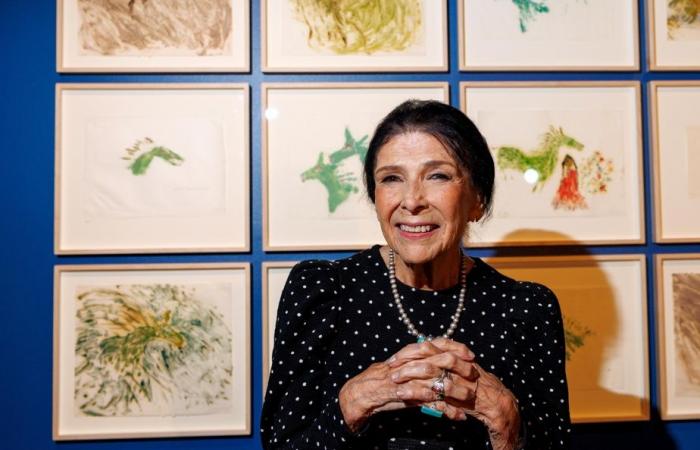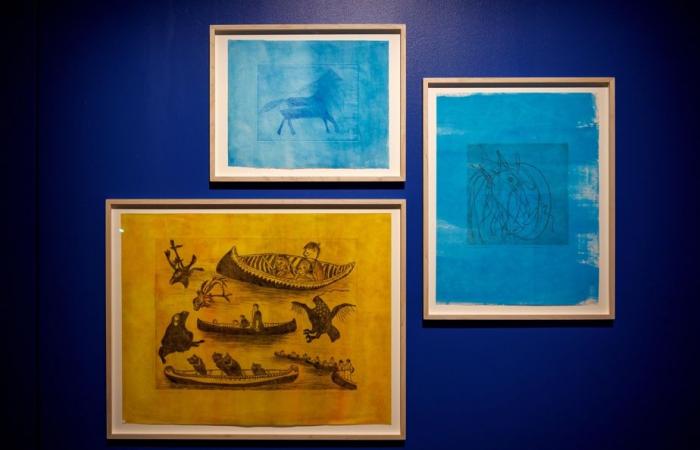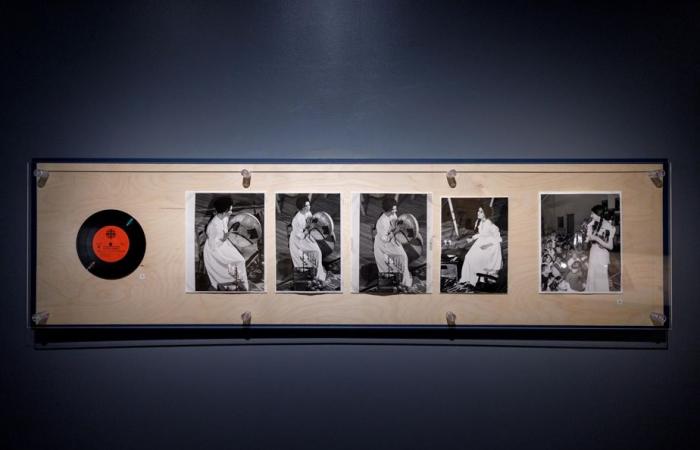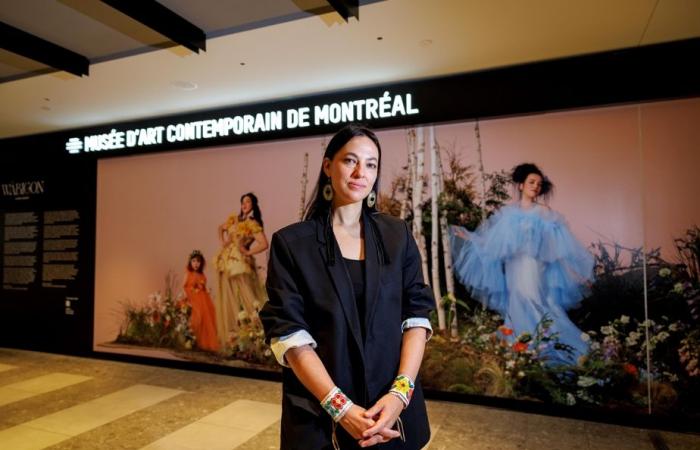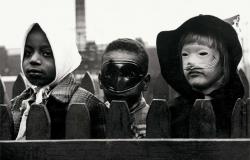The Museum of Contemporary Art (MAC) pays tribute to indigenous activist filmmaker Alanis Obomsawin by presenting the retrospective Children need to hear another story. The Press met the prolific 92-year-old artist, whose name, predestined, means “scout” in Abenaki.
Posted at 1:41 a.m.
Updated at 7:00 a.m.
“We don’t make a documentary to be praised. If you do that, I pity you. You have to know deep in your heart why you do what you do, and in my case, it has always been to live in a better world, especially for our children,” explained Alanis Obomsawin with emotion.
The activist and documentary filmmaker, who has made no less than 64 films for the National Film Board (ONF) since 1967, spoke a few moments earlier of the difficult shooting of her film Kanehsatake – 270 years of resistanceproduced in 1993, following which she suffered a number of criticisms and insults.
However, Alanis Obomsawin only documented the infamous conflict with the Canadian army. Moreover, over time, public opinion came to his side. How does she explain this turnaround?
PHOTO ALAIN ROBERGE, THE PRESS
Visual works created by Alanis Obomsawin
“During all these years, there have been many people, leaders, who worked to bring about change and also to show the injustices that we were experiencing. […]what it feels like, children who are always mistreated. People are more educated on these issues and over the years the situation has improved. »
Now I’m 92 and I see huge changes. I travel all over the world and I am always happy to come back to Canada, which is today ahead in terms of the respect it shows our people. I also think that Canadians want there to be greater justice. So I’m happy, it doesn’t matter to me if I die tomorrow…
Alanis Obomsawin
We realize by browsing the retrospective dedicated to him, everything that Alanis Obomsawin did in his life had a goal: to create bridges with the white population by making them aware of the history of indigenous peoples and by correcting falsehoods that were circulating about them. All this in a peaceful manner.
In an excerpt from the show Take 30broadcast in 1969 on the CBC, a young black activist explains that violence is the only language that governments understand, and the only way to make things happen. Alanis Obomsawin contradicts her and says she is convinced she can “reach the conscience of the white man” peacefully.
Is she still convinced that the peaceful path is the right way to go?
I don’t think violence gets things done. It’s up to us to explain things. Violence is hatred. Do we really want to teach our children hatred? I’m allergic to it. We need to show them hope and love. And you know what? We are making a lot of progress, even if there are still things to do.
Alanis Obomsawin
As we clearly see in the exhibition, Alanis Obomsawin has lived several lives and worn several hats. From her first tours to schools where she sang and told indigenous stories to her music concerts, her life as a visual artist and her career as a documentary filmmaker, this committed woman has touched it all.
Is there one of these hats that she enjoyed wearing more? “There was so much work to do and so much courage to denounce the lies that I used every possible platform to get my message across. But before making films, I sang in schools, I told stories, and that gave me a lot of pleasure. »
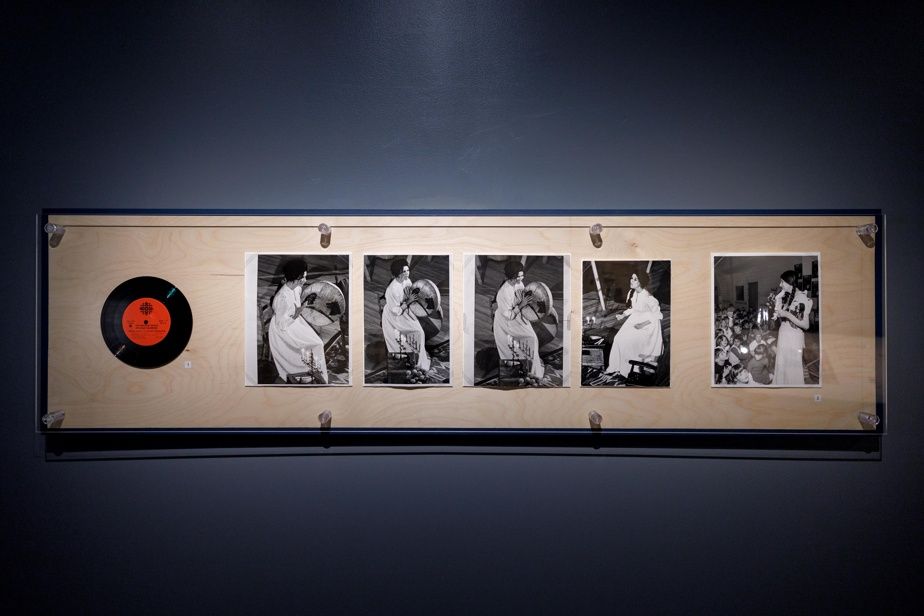
PHOTO ALAIN ROBERGE, THE PRESS
In his album Bush Ladyreleased in 1984, Alanis Obomsawin sings and tells stories in several languages.
Throughout our discussion, the subject of education keeps coming up. We realize that from a young age, it was his hobby horse.
I fought for 60 years for the same reason: a better education system. This system was lousy for several generations. It took me several years to understand why on the days when I had my Canadian history class, I got beaten. I realized that our books were full of lies and hatred.
Alanis Obomsawin
Presented in Berlin, Vancouver and Toronto, the exhibition Children need to hear another story is divided by decade. There we discover extracts from films, interviews, photographs, paintings, drawings, posters and newspaper cuttings.
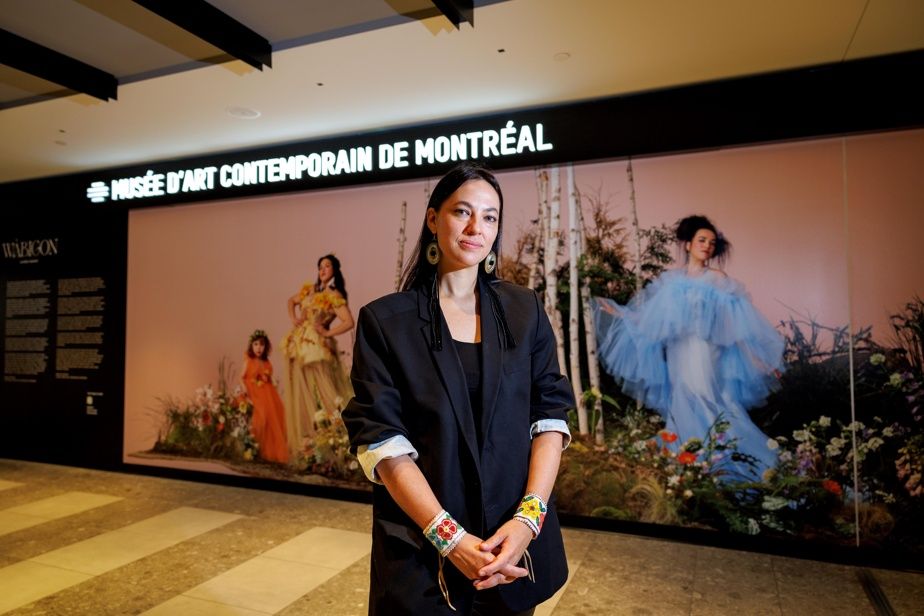
PHOTO ALAIN ROBERGE, THE PRESS
Caroline Monnet, in front of the mural she created at Place Ville Marie
Just outside the MAC’s temporary premises in the basement of Place Ville Marie, you can see a mural by Caroline Monnet, Wabigonwhich means “A flower blooms”, made in homage to Alanis Obomsawin. It is a portrait of eight indigenous women who are leaders in their communities, she said.
“I wanted to highlight all the buds that she managed to sow during her career and the impact she had on me, but also on all the women I photographed,” explained Caroline Monnet.
Until January 26, 2025 at the temporary MAC, at 4, Place Ville Marie
Visit the exhibition page

